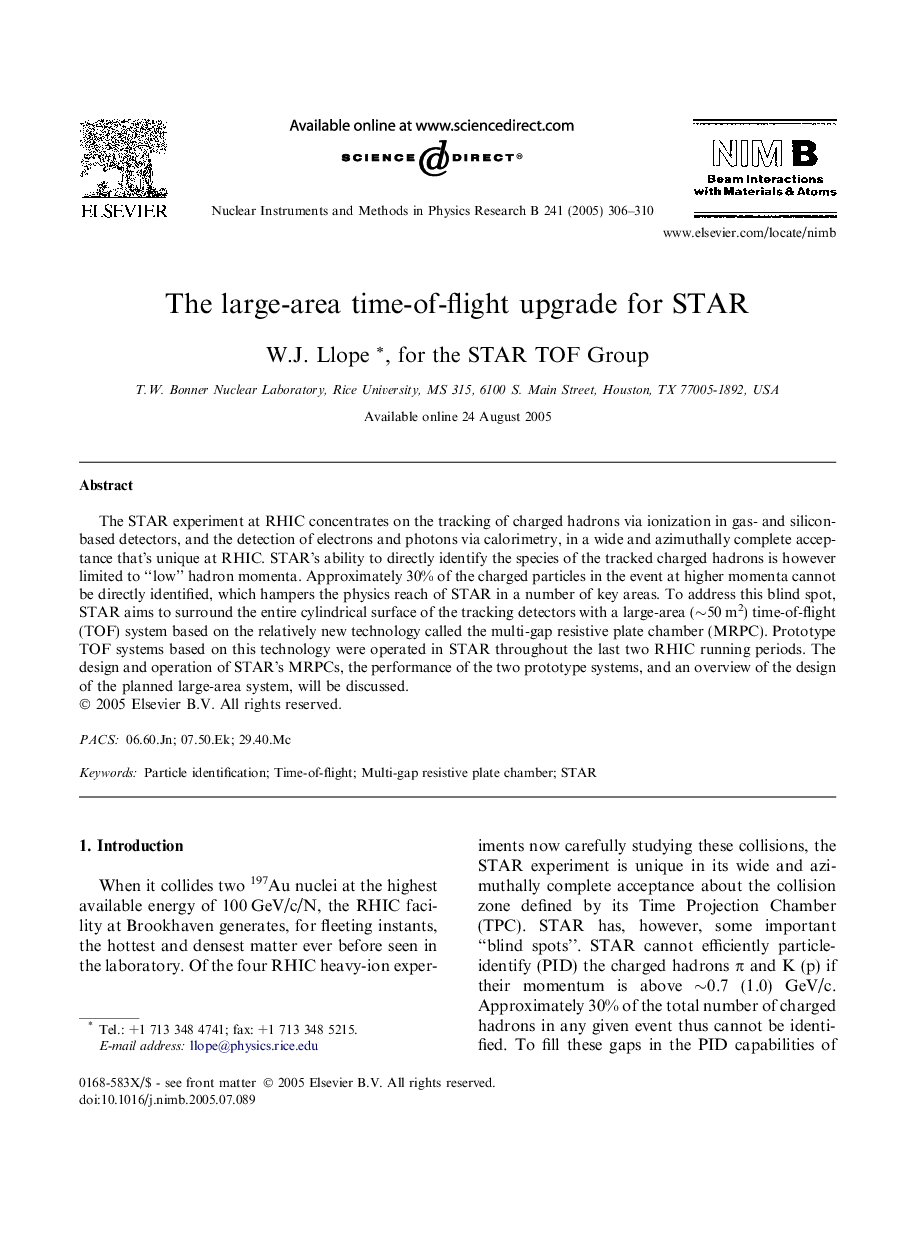| Article ID | Journal | Published Year | Pages | File Type |
|---|---|---|---|---|
| 9817454 | Nuclear Instruments and Methods in Physics Research Section B: Beam Interactions with Materials and Atoms | 2005 | 5 Pages |
Abstract
The STAR experiment at RHIC concentrates on the tracking of charged hadrons via ionization in gas- and silicon-based detectors, and the detection of electrons and photons via calorimetry, in a wide and azimuthally complete acceptance that's unique at RHIC. STAR's ability to directly identify the species of the tracked charged hadrons is however limited to “low” hadron momenta. Approximately 30% of the charged particles in the event at higher momenta cannot be directly identified, which hampers the physics reach of STAR in a number of key areas. To address this blind spot, STAR aims to surround the entire cylindrical surface of the tracking detectors with a large-area (â¼50Â m2) time-of-flight (TOF) system based on the relatively new technology called the multi-gap resistive plate chamber (MRPC). Prototype TOF systems based on this technology were operated in STAR throughout the last two RHIC running periods. The design and operation of STAR's MRPCs, the performance of the two prototype systems, and an overview of the design of the planned large-area system, will be discussed.
Related Topics
Physical Sciences and Engineering
Materials Science
Surfaces, Coatings and Films
Authors
W.J. Llope, for the STAR TOF Group for the STAR TOF Group,
